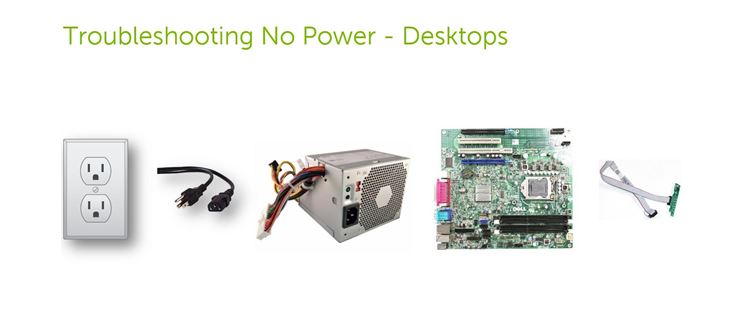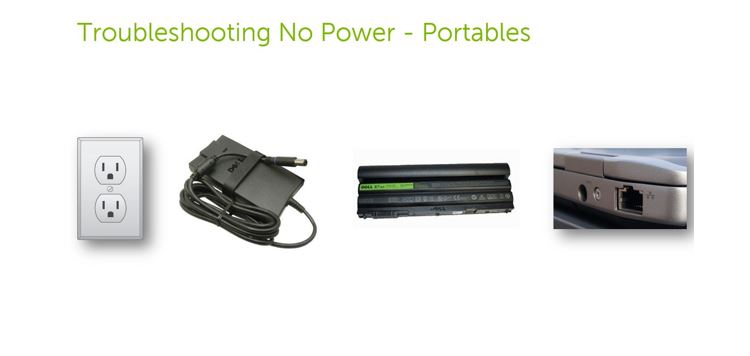Search the site / CPU Search / Quick CPU lookup:
Troubleshooting Desktop and Portables
The power button displays any blinking LEDs, follow NO POST Troubleshooting link.
No response from the power button (LED stays off). It is considered no power. Continue with the steps below.

Main points of failure are Power Supply and Motherboard
Troubleshooting steps
1-Check that all cables are secure in their connection, reconnect plugs if need it.
2-Ensure the wall outlet is working by trying another device on it first. Connect the power cord directly to the wall outlet if need it.
3-If there were any hardware changes just prior to the issue, reverse those changes and test again
4-Remove any non-essential items connected to the Computer(printers, flash drives, external hard drives, etc.).
5-If after checking all the previous steps and the system will not power. Continue with the Test of the internal PSU(Power Supply).
6-Some PC manufactures have a button on the back of the PSU(on the rear of the PC). You can press the button, if the LED lights up for 3 seconds the power supply is okay. This will confirm that the issue is
related to the motherboard or other device. It is recommended to disconect everything(video card, hard drives and optical drives, any PCI card), test motherboard( with one stick of RAM in all slots) and power supply only.
7-If there is no light by pressing the button, disconnect everything from power supply and test the power supply by itself. If no lights or fan movement ocurred test with another known good power supply.

Main points of failure are battery, charger, DC-IN jack Connector and Motherboard
Troubleshooting steps
1-Check that all cables are secure in their connection, reconnect plugs if need it. Test with known good charger.
2-Ensure the wall outlet is working by trying another device on it first. Connect the power cord directly to the wall outlet if need it. check the DC-IN Port(where the charge connects)
3-If there were any hardware changes just prior to the issue, reverse those changes and test again.
4-Remove any non-essential items connected to the Laptop(printers, flash drives, external hard drives, etc.).
5-Remove the battery, Follow manufacture process.
6-Remove CRUs(Customer removeable units) this include the hard drive and RAM. try to power the system with only power supply. (battery, hard drive and RAM must be out)
7-If it is still a no go. Remove(battery, hard drive, charger and RAM).
8-Remove CMOS battery(lithium cell battery usually CR2032) for at least 30 Seconds.
9-Insert CMOS battery to the motherboard and test the system by trying to power with CMOS battery and charger only.
10-If the system powered put everything back.
11-If the issue continues motherboard is bad. Check warranty or call manufacture for a repair quote if possible.